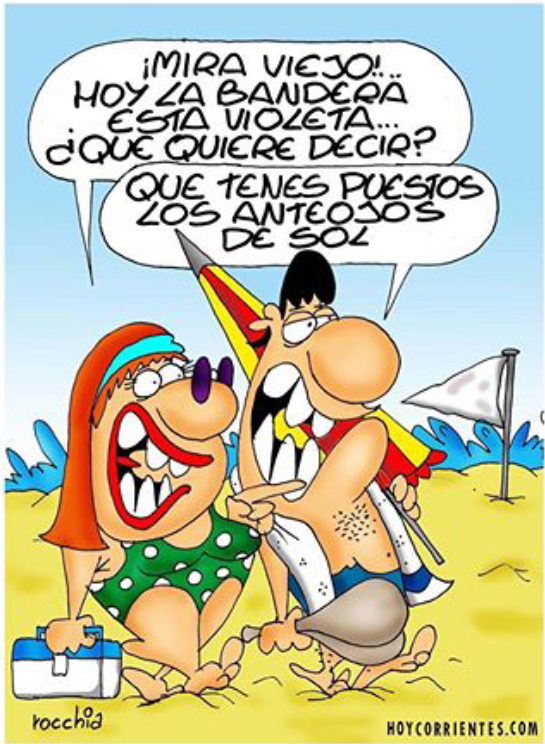
– Look, bro!
Today the flag is purple…
What does it mean?
– That you’re wearing
sunglasses.
Contrary to what one might think, Spanish is not an easy language to learn. Even for an Italian person it can be difficult, although Italian and Spanish are very similar. In addition, we must bear in mind that Castilian Spanish is the generally studied variant. There are actually many more variants worldwide. Among them there are considerable differences mainly in vocabulary, but also in morphosyntax in some cases.
Let’s take as an example this Fernando Rocchia’s cartoon that I’ve already translated into Italian and published on my Instagram account (@zanessis_traduzioni). In Standard Spanish “viejo” means “old”. However, by travelling to different Latin American countries, different meanings of the same word are discovered. So in Argentina and Peru it is used to refer to dad affectionately, whereas in Mexico it means “bro”, as an informal meaning of “friend”.
In morphosyntactical terms, too, we are able to notice a big difference. Rocchia, an Argentinian author, writes “tenés puestos”. “Tenés” is the second person singular present indicative form of the verb “tener”, but only in Latin America since in Castilian Spanish it is “tienes”. Therefore, the ending -és is used in the second person singular present indicative form of all verbs, but only in the Latin American variants of Spanish. Similarly, the Castilian Spanish “tú” is replaced with “vos” throughout Latin America.
So you see that Spanish variants of the American continent would require, on their own, a very thorough study…